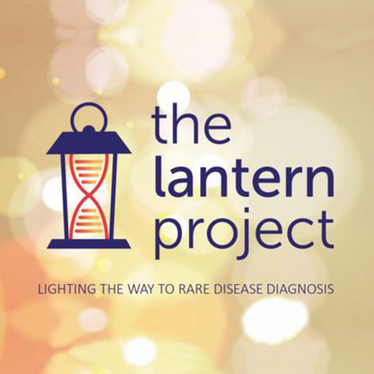Program eligibility
The Lantern Project* consists of an acid α-glucosidase enzyme assay with reflex to GAA sequencing if deficient, and is for individual patients suspected of having Pompe disease via:
- Symptoms consistent with Pompe disease
- Presumptive positive newborn screen for Pompe disease (expedited testing available)
*This testing program is not appropriate for carrier testing as enzyme assay will not reliably detect carriers.
About the test
Testing algorithm:
- Acid α-glucosidase will be assayed and if deficient will reflex to,
- GAA sequencing analysis (with copy number variant analysis if needed)
- If either enzyme assay or GAA sequencing has already been performed, these tests can be ordered individually, if needed.
Expedited testing and special considerations for IOPD
For infants less than one year of age when suspected Infantile-onset disease or presumptive positive Pompe disease based on newborn screening, the following algorithm is available:
- Acid α-glucosidase will be assayed and if deficient will reflex to,
- Expedited GAA sequencing analysis AND
- Cross-reactive immunologic material (CRIM) testing (in parallel) CRIM testing is also available as a standalone test if diagnostic testing has previously been completed and patient status is not discernable by genotype (include DNA report from outside laboratory with sample). For patients older than one year of age, please contact Revvity Omics at 866-354-2910 or email genomics@revvity.com
Sample requirements
CRIM testing
- Whole blood (EDTA or Heparin) is an acceptable sample type. Please contact the laboratory for inquiries about the use of other sample types.
GAA gene sequencing
- Dried blood spots (DBS) are preferred, but whole blood (EDTA) is also acceptable. A saliva sample can be used if only gene sequencing is being ordered.
Bundled testing (Enzyme assay with reflex to sequencing and/or CRIM)
- Dried blood spots (DBS) are preferred, but whole blood (EDTA) is also acceptable. A saliva sample cannot be used for enzyme assay or CRIM testing.
Methodology
Enzyme assay
- Acid α-glucosidase activity is measured on dried blood spots (DBS) via Flow Injection Tandem Mass Spectrometry (FIA/MS/MS).
Gene sequencing assay
- GAA sequencing is performed using NGS and analysis of all coding exons and 10bp of flanking intronic regions. This assay cannot detect variants in regions of the exome that are not covered, such as deep intronic, promoter, and enhancer regions, or areas containing large numbers of tandem repeats. Of note, this assay is designed to detect the exon 18 deletion [c.2481 + 102_2646 + 31del (p.Gly828_Asn882del)] and the intronic mutation c.-32-13T > G, if present. Copy number variation (CNV) of three exons or more is reported. Single exon CNVs can also be predicted, but reported after follow-up confirmation is performed.
CRIM assay
- Qualitative assessment of GAA CRIM status is obtained from Western blotting.
Turn-Around-Times (TAT)
- Acid alpha-glucosidase Enzyme Assay: 3 days
- GAA Gene Sequencing: 3 weeks
- Expedited GAA Sequencing and CRIM testing: 7 days
References
1. Diagnostic criteria for late-onset (childhood and adult) Pompe disease. Muscle Nerve. 2009;40:149-160.
2. Martiniuk F et al. Carrier frequency for glycogen storage disease Type II in New York and Estimates of affected individuals born with the disease. Am J Med Genet. 1998;79:69-72.
3. Burton B et al. The Initial Evaluation of Patients After Positive Newborn Screening: Recommended Algorithms Leading to a Confirmed Diagnosis of Pompe Disease. Pediatrics Jul 2017, 140 (Supplement 1) S14-S23; DOI: 10.1542/peds.2016-0280D.
How to order
Step 1
Test selection and place order
Step 2
Specimen collection and shipment
Step 3
Get results
How to order
1. Test selection and place order
Select the correct test for your patient, and fill out The Lantern Project Requisition Form.
- Please make sure that all sections are completed, and that the patient has signed the informed consent form.
2. Specimen collection and shipment
- Obtain a sample for testing from the patient using one of the provided Revvity Omics test packs. If you do not have a kit available in your office, please contact us here and we can have one sent out to your office.
- Ensure that the patient sample is labeled with the patient’s name and date of birth.
- Please note that all biochemical assays require a dried blood spot sample or whole blood. Step-by-step instructions for collecting a sample can be found here.
- Samples may be submitted without a collection kit by following the guidelines for specimen requirements and completing the requisition form.
- Package the patient sample, informed consent form, and test requisition form back into the test kit, and utilize the included pre-paid shipping label to return the kit to Revvity Omics for processing.
- As a patient’s clinical presentation is an essential part of fully interpreting genetic test results, we ask that you kindly include any applicable medical records or clinical notes with the sample at the time of test submission.
3. Get results
Once Revvity Omics receives the sample, you will receive phone call to report abnormal findings, with a written report to follow within the established turnaround time for the ordered test. Bundled tests will be reported together in one comprehensive result.
This testing service has not been cleared or approved by the U.S. Food and Drug Administration. Testing services may not be licensed in accordance with the laws in all countries. The availability of specific test offerings is dependent upon laboratory location. The content on this page is provided for informational purposes only, not as medical advice. It is not intended to substitute the consultation, diagnosis, and/or treatment provided by a qualified licensed physician or other medical professionals.





























